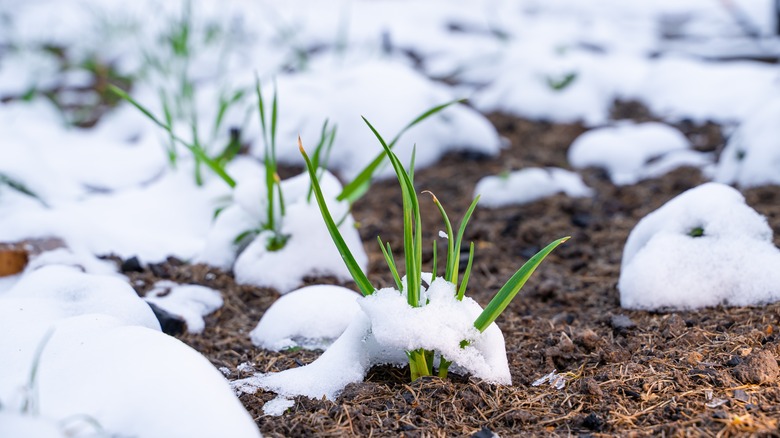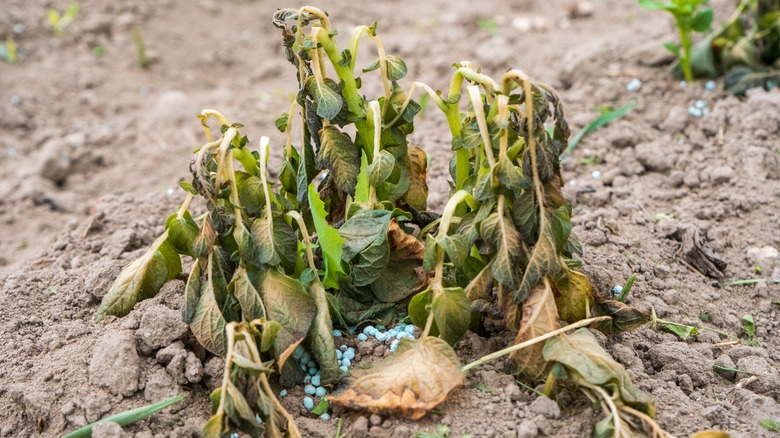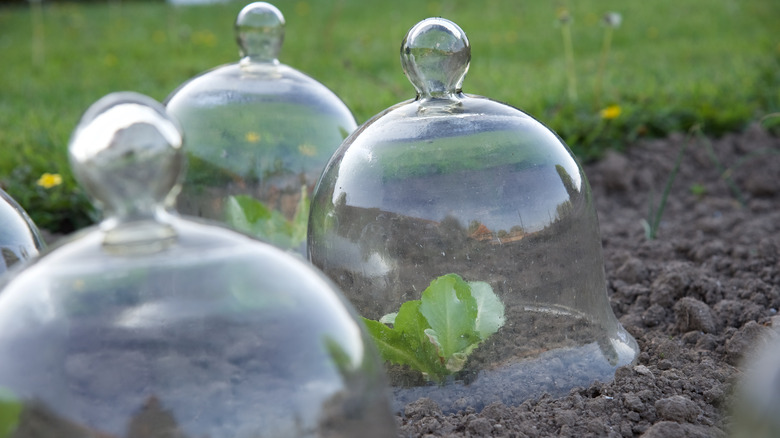The Trick To Rescuing Your Garden Plants After An Unexpected Snow
With climate change contributing to warmer springs where plants break their hibernation earlier than ever before, unexpected snow in late spring is becoming more of a threat to outdoor gardens. Late snow is typically unpredictable, and because of this, it's hard to always be ready with the proper tools to protect outdoor garden plants. Unfortunately, when this happens, many of your plants will suffer from frost damage. However, this doesn't necessarily mean that they are gone for good. In fact, there could be a way to save your garden after unexpected snow and the most important thing you need is patience.
After a sudden snow, as tempting as it may be, you should not immediately take any action with your outdoor plants. This means you should not add any fertilizer or start pruning back damaged leaves and branches. The reason for this is that your plants are still very weak and sudden changes can cause excess stress and difficulty. The best thing you can do for your plants after an unexpected freeze is to lightly water them once the temperature rises above freezing again. A little water can help the plant begin its recovery. However, it is important to give your damaged plants less water than normal because too much water will also cause further stress.
How to tell if your plants will come back
Unfortunately, it will likely take a while before you can be sure whether or not your outdoor plants will survive after an unexpected freeze. If they are frost-sensitive tender plants like tomatoes, cucumbers, and melons, they are more likely not to make it. However, even if all the leaves of your tender plant have turned brown, it still may not be dead. You can test this by wiggling the entire plant to see if it is loose in the ground. If the plant is loose, it means the roots have been damaged and it likely won't survive. However, if it is still strongly held in place, the roots are still alive and the plant has a chance at regrowth.
For hardier perennial plants that are more frost-resistant, you will have to wait and see the extent of the damage. Plants show freeze damage in different ways and may go limp or change color to yellow, brown, or black. If this happens, you should continue watering the plant and keep an eye on it for new growth. If new growth appears in a few months that's a sign that your plant will recover. Once this happens, you can start pruning back the dead leaves and branches, but you will need to be extremely careful. It is better to under-prune than over-prune because over-pruning will cause a longer recovery time.
How to better protect your garden next time
Of course, the best way to keep your garden safe from unexpected snow and cold damage is to have a plan for protecting it in the future. One way you can do this is by laying down mulch in the spring to help insulate the roots of your plants and keep them from drying out, even in cold snaps. For small plants, you can also cover them with a cloche, which is a glass cover that will help protect them. If you don't have a cloche you can also use overturned drinking glasses or any sort of glass bowl, container, or lid. Plastic can also work in a pinch. Covering the plants this way will essentially make a tiny greenhouse for each one.
If you can get to the garden center before the cold weather hits, you can always pick up some burlap or garden fleece to wrap around the larger plants to protect them from frost. However, if you don't have time, the Farmer's Almanac recommends simply using bedsheets draped loosely around the plants and secured with bricks or heavy rocks.


